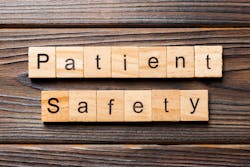A report published by the Leapfrog Group found that higher-graded hospitals are safer for all patients, but Black and Hispanic patients are still at increased risk of experiencing certain surgery-related adverse safety events when compared to white patients, even at hospitals at all grade levels.
Founded in 2000 by large employers and other purchasers, the nonprofit Leapfrog Group assigns letter grades to hospitals based on their record of patient safety.
Its new report, Racial, Ethnic and Payer Disparities in Adverse Safety Events: Are there Differences across Leapfrog Hospital Safety Grades, was developed in partnership with Urban Institute, with funding from AARP.
“We must honestly acknowledge the persistent racial and ethnic disparities, but we can't stop there,” said Missy Danforth, vice president of healthcare ratings at the nonprofit Leapfrog Group, in a statement. “Achieving safe care for all patients requires a focused commitment to transparency, better data collection, and targeted interventions.”
The report compares the rate of 11 dangerous, preventable patient safety problems, including blood clots or sepsis after surgery, among white, Black, and Hispanic patients at hospitals that earned Hospital Safety Grades of “A,” “B,” and “C/D/F.” Analyzing differences across all graded hospitals, Black patients experience a higher incidence of surgery-related complications than white patients, including:
- 34 percent higher rates of sepsis after surgery
- 51 percent higher rates of dangerous blood clots after surgery
- 17 percent higher rates of respiratory failure after surgery
Additionally, relative to white patients and across all Hospital Safety Grades, Black patients have a significantly higher risk of Stage 3 and 4 pressure ulcers, which are bed sores that progressed to a stage that is debilitating or deadly. Relative to white patients, Hispanic patients have a higher risk of experiencing sepsis and respiratory failure after surgery, and these differences remain significant at higher-graded hospitals.
- 34 percent higher rates of sepsis after surgery
- 21 percent higher rates of respiratory failure after surgery
Across all hospitals, patients covered by Medicare or Medicaid experienced higher rates of adverse safety events when compared to patients covered by private insurance coverage.
“These data suggest that the issue does not lie in the individual hospitals themselves but is a systemic issue impacting the quality of care for Black and Hispanic patients and those with public insurance plans,” said Anuj Gangopadhyaya senior research associate in the Health Policy Center at the Urban Institute, in a statement. “Hospitals should recognize these disparities and ensure resources are devoted to reducing adverse safety events among patient groups at the highest risk.”
The report found that the Hospital Safety Grade accurately predicted which hospitals put patients most at risk for adverse events. However, for Black or Hispanic patients, or patients without private insurance, the risks were higher in each grade category. Data used in this report was derived from 2019 hospital discharge data from 15 states, including over 10 million patient records, made available through a database maintained by the federal Agency for Healthcare Research & Quality (AHRQ). Rates were adjusted for patient age, sex, state, quartile of income based on patient zip code and payer type.


